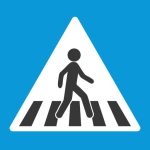Programs to Prevent Substance Abuse

When you consider all the problems caused by substance abuse and behavioral disorders, you wonder why more isn’t being done earlier in life to strengthen resilience against peer pressure while teaching kids how to safely cope with stress. We have approached the subject a couple of times here at AddictionNews, and today we’re going to take another look at prevention programs.
So far, the most successful intervention we have found is Parent-Child Interactive Therapy (PCIT). That’s right, you get the biggest results in prevention by starting as early as possible, even pre-birth. This training teaches parents how to read the language of their baby and respond appropriately. The training significantly reduces parental stress and anxiety, leading to dramatically improved parenting.
One of the best toolkits you can equip children with is an assortment of techniques for dealing with stress. These include such things as taking “time out,” leaving the room, counting to 10, deep breathing, breath holding, laughing, isometrics, and running up and down stairs. Learning what to do when someone is mean to you is also crucial: don’t hit, walk away, find something else to do, shake it off, empathize, sympathize.
Many of the problems of self-regulation in children are due to dysfunctional attachment in infancy: “insensitive, unresponsive, or inconsistent caregiving,” according to a review of prevention programs published in BMC Psychology. There is a large body of evidence connecting dysfunctional attachment to mental health and emotional problems in childhood and adolescence.
As infants age into childhood, it becomes increasingly difficult to alter the trajectory of their behavior. One prevention program proven to work with young children is storytelling for resilience. Getting kids to tell stories “promotes empathy, prosocial behaviors and elicits factors of resilience,” researchers found.
Once children are in school, we get a much better sense of which prevention programs work and which don’t. A meta study in the journal, Pediatrics, examined 91 studies involving 16 different substance abuse prevention programs. The results were not particularly encouraging regarding the ability to impact future substance abuse trends.
Drug Abuse Resistance Education (D.A.R.E.) — the most widely implemented substance abuse prevention program in the world — “had no statistically significant impact on psychoactive substance use.” Life Skills Training (LST) provided the most robust evidence to support its effectiveness. Research shows LST reduces the subsequent use of tobacco, alcohol, and illicit drugs.
LST focuses on three areas: the individual, the social group, and resistance skills. They provide factual information about the negative consequences of substance abuse and teach such things as:
- self-esteem
- self-management
- decision-making skills
- communication skills
- assertiveness training
- conflict resolution
- stress management techniques
Recently, The Lund Report, an independent health newsletter, published a series of articles looking at prevention programs for Oregon schools. Lund turned up all kinds of useful information for evaluating prevention programs. One resource is Blueprints for Healthy Youth Development at the University of Colorado Boulder.
Blueprints is considered the “Consumer Reports of prevention programs,” but it’s mostly descriptive rather than evaluative. For example, for Life Skills Training, they provide five different endorsements of the program:
- Blueprints: Model Plus
- Crime Solutions: Effective
- OJJDP Model Programs: Effective
- SAMHSA : 3.9-4.0
- Social Programs that Work: Top Tier
Blueprints lists 19 “model” programs and 97 “promising” programs in their program directory. To be “promising,” Blueprints requires a program to have shown positive outcomes in one randomized controlled trial, or two trials with a control group. There’s a lot of information provided for each program, including a fact sheet, program costs, funding sources, and a detailed program evaluation.
Children eventually become adults and, amazingly, start demonstrating improved self-control and decision-making capabilities. But adults can still benefit from training that reduces stress and improves mental health. Learning to displace stress in ways that are not self-harming (or harmful to others) is the key to lower anxiety and greater life satisfaction. These skills are best taught early and often.
Written by Steve O’Keefe. First published June 24, 2025.
Sources:
“Optimizing parenting and child outcomes following parent-child interaction therapy — toddler: a randomized controlled trial,” BMC Psychology, November 22, 2024.
“The impact of storytelling on building resilience in children: A systematic review,” Journal of Psychiatric and Mental Health Nursing, August 2024.
“Primary Substance Use Prevention Programs for Children and Youth: A Systematic Review,” Pediatrics, September 2020.
“Common Methodological Problems in Randomized Controlled Trials of Preventive Interventions,” Prevention Science, June 26, 2021.
“Not all prevention research is created equal, but experts can pinpoint the solid science,” The Lund Report, January 11, 2024.
Image Copyright: leaf.




